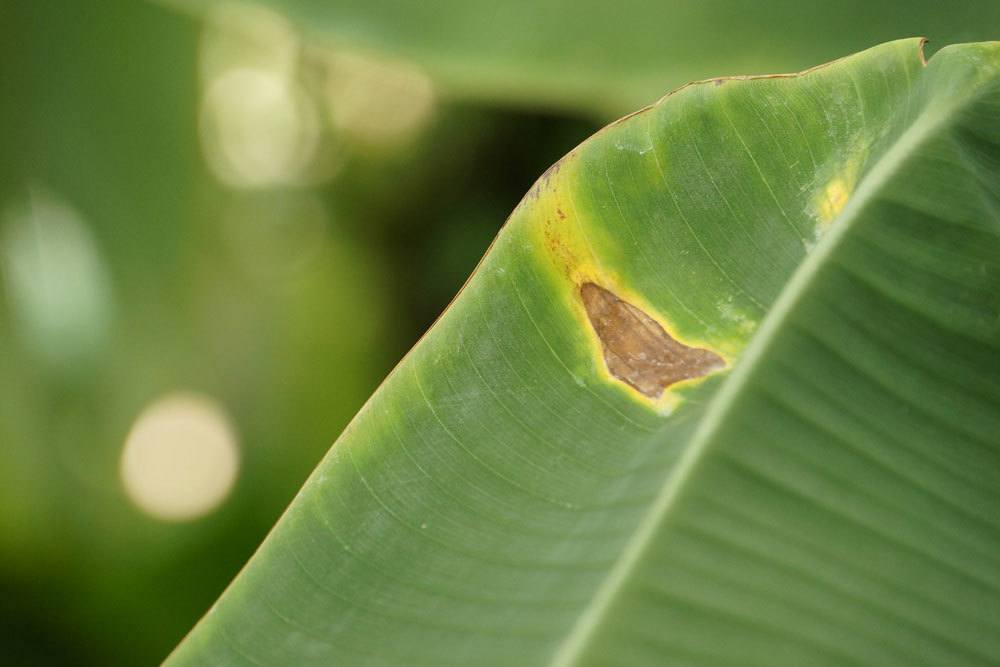As a proud banana tree grower, finding those dreaded brown spots speckled across your plant’s leaves can really put a damper on your day. But before you get too down, know that brown spots are a common issue and one that’s often treatable with the right knowledge and action. Understanding what causes the spots, accurately diagnosing the trigger, and implementing strategic solutions can help restore your tree’s bright green glow.
What Triggers Brown Banana Leaf Spots?
Brown blemishes on banana trees typically originate from one of three main underlying problems:
-
Fungal or bacterial infections – Two common culprits are fungal diseases like Fusarium wilt or Anthracnose and bacterial invaders like Banana Xanthomonas Wilt (BXW). These pathogens manifest as brown or black spots, sometimes ringed by yellowing halos. Lesions may appear water-soaked or sunken.
-
Environmental stress – Factors like excessive sunlight, poor drainage, improper watering, temperature fluctuations, and more can stress plants. Bananas react by developing scattered brown spotting, crisp edges, or large dead sections on leaves.
-
Pest damage – Insects feasting on plant tissues can leave behind telltale trails of brown markings. Aphids, thrips, and spider mites are frequent offenders. Webbing, honeydew residue, or visible pests confirm bugs are to blame.
Diagnosing What’s Causing the Spots
Accurately diagnosing the underlying trigger of those vexing spots is crucial for effective treatment. Here are some tips:
-
Examine spot patterns and appearance – Fungal spots often display dark edges and concentric rings Bacterial lesions tend to be uniform in color Environmental stress causes random distributed spotting. Trails or clusters indicate pests.
-
Check leaf undersides – Pests like spider mites congregate on undersides of leaves. Finding them there points to bugs, not disease, as the likely spot source.
-
Review growing conditions – Overwatering poor drainage, temperature extremes or insufficient fertilization can cause leaf spotting. Evaluating conditions helps pinpoint environmental stressors.
-
Isolate affected plants – Quarantine spotted specimens away from healthy ones to prevent disease spread. Fungal, bacterial, and pest causes can all spread to nearby plants.
-
Send leaf samples for lab testing – When the cause remains uncertain, plant diagnostic labs can identify pathogens through culturing, molecular testing, and microscopy.
Effective Treatments for Banana Leaf Spots
Once the cause is clear, implement targeted treatment:
-
Fungicides – After pruning diseased leaves, spray neem oil or copper compounds. Improve airflow and drainage. Remove and discard all infected debris to prevent spore spread.
-
Bactericides – No true bactericides exist, but copper products inhibit bacterial growth. Boost sanitation by disinfecting tools and promptly removing infected plant matter.
-
Pest control – Insecticidal soaps, horticultural oils, and neem treatments can eliminate mites, thrips, and other pests. Sticky traps monitor populations. Prune badly infested leaves.
-
Reduced watering – If overwatering caused spots, allow soil to partially dry between waterings. Enhance drainage with amendments or slope planting.
-
Shade – Filter sunlight with shade cloth if intense light damaged leaves. Slowly acclimate to stronger light.
-
Stable conditions – Eliminate/reduce temperature swings and drafts. Move potted plants indoors temporarily if needed.
Preventing Banana Leaf Spots
While treatment can resolve existing spots, prevention is key for long-term banana tree health:
-
Provide proper sunlight, spacing, water, drainage, airflow, humidity, and temperatures to minimize plant stress.
-
Apply preventative organic fungicides like neem oil to deter fungal spores from infecting leaves.
-
Fertilize regularly and mulch to enhance plant health. Mulching also suppresses weeds and pests.
-
Inspect both leaf surfaces weekly for early signs of mites, thrips, or other pests. Take action before populations explode.
-
Prune strategically to encourage air circulation. Promptly discard any spotted foliage.
-
Disinfect tools with bleach solution between plants to avoid spreading disease.
-
Quarantine new plants to prevent introduction of nursery pathogens.
By understanding common spot causes, accurately diagnosing the trigger, taking prompt action, and emphasizing prevention, you can keep your banana tree’s leaves vibrant, green, and beautiful. Don’t let mysterious spots detract from your indoor or outdoor banana plants’ tropical flair.

India’s No.1 Online AGRI SHOP!
Easy and Fast Shipping
No fixed costs. Pay when you sell
Secure and timely payments
24/7 services to help you through every step of selling online

New User? Sign Up
FREE India Wide Shipping

How to treat brown spots on plants ?
FAQ
Why does my banana tree have brown spots on the leaves?
Fusarium wilt and Anthracnose are the usual suspects when it comes to fungal diseases leaving their autograph in the form of brown spots on Dwarf Banana leaves.Jun 14, 2024
How do you treat banana leaf spot disease?
Chemical Control
Contact fungicides like chlorothalonil or mancozeb and a systemic fungicide, e.g. tebuconazole or propiconazol are recommended.
How do you fix brown leaves on a banana plant?
If the surrounding saturation is too low or the heat too high, its leaf-tips may start to brown over and curl, especially in direct sunlight. Hose the foliage down from time to time to hydrate the leaves and keep the dust levels down.
How do you treat brown spots on plant leaves?
If you see brown or yellow spots that are sunken and growing in size over time, this could be something called anthracnose, a type of fungus. It’s not usually harmful, just unsightly. Solution: Isolate your plant and cut off affected leaves. You’ll probably need to use a fungicide to eliminate the problem.
